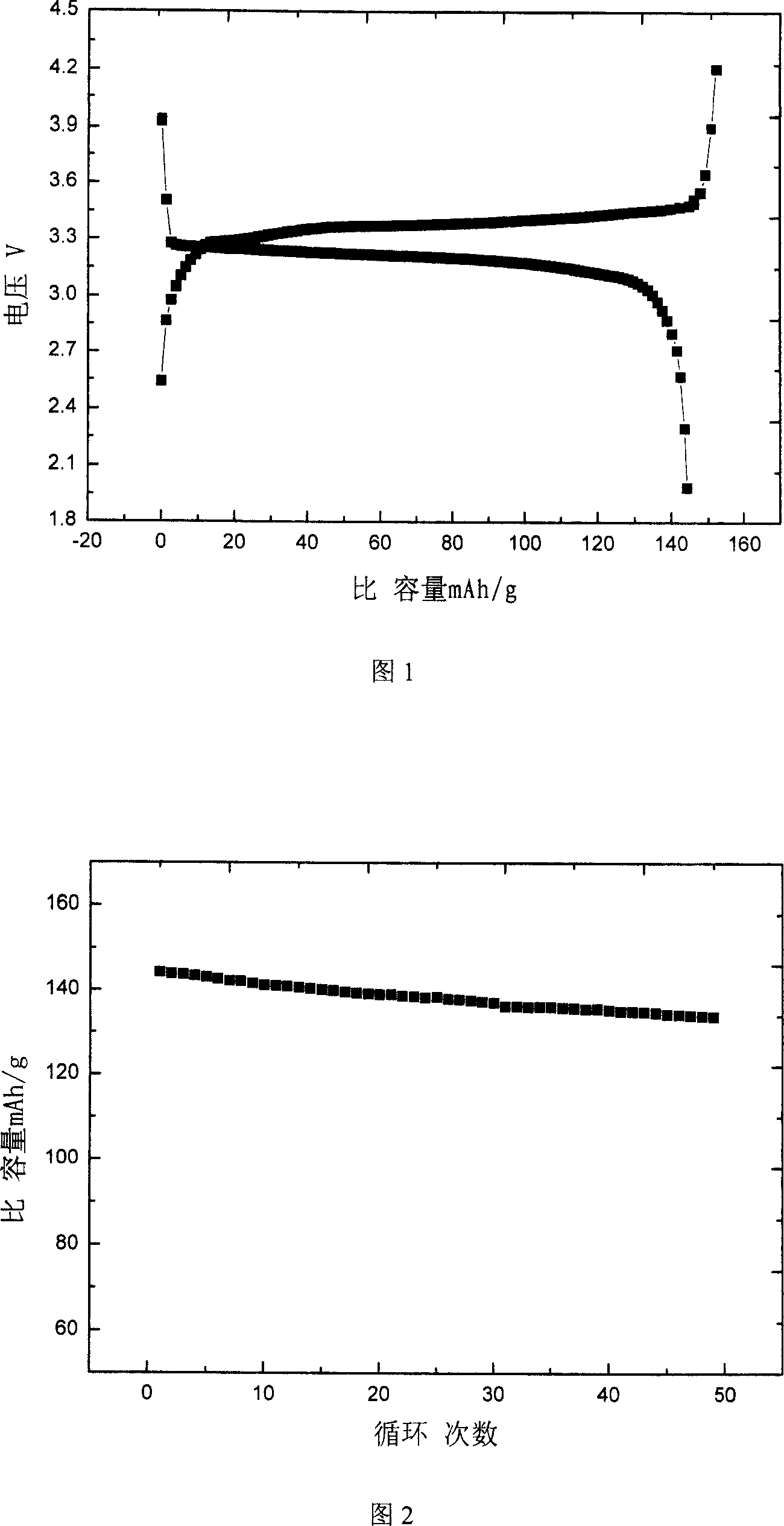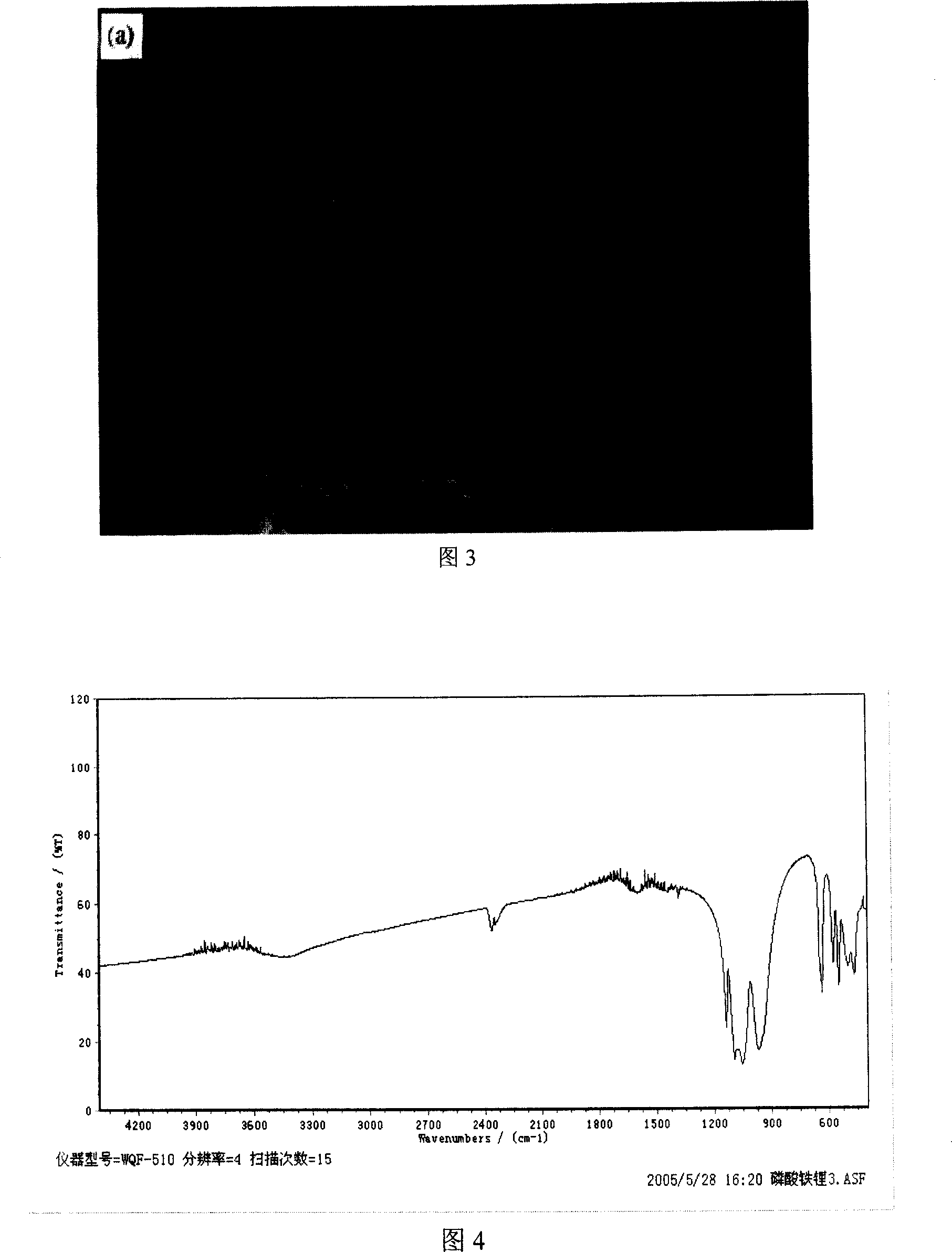Anode material of lithium ion cell and preparation method thereof
A technology for lithium ion batteries and cathode materials, which is applied in electrode manufacturing, battery electrodes, chemical instruments and methods, etc., can solve the problems of insufficient diffusion performance of lithium iron phosphate, difficult control and operation, and poor product uniformity. Achieve good recycling performance, easy control and operation, and good product uniformity
- Summary
- Abstract
- Description
- Claims
- Application Information
AI Technical Summary
Problems solved by technology
Method used
Image
Examples
Embodiment 1
[0032] 2346.5 g NH 4 h 2 PO 4 , 3655.2 grams of FeC 2 o 4 2H 2 O, 778.8 g Li 2 CO 3 And 650 grams of glucose and 75 grams of nano TiO 2 Mixing, adding the mixed material into the ball milling jar, the volume ratio of the ball to material is 1:1, sealing the ball milling jar, and continuously ball milling for 12 hours. Move the ball-milled raw materials to a high-temperature atmosphere furnace, raise the temperature to 350°C at a rate of 10°C / min, keep the temperature constant for 12 hours, then raise the temperature to 680°C at a rate of 15°C / min, and keep the constant temperature at this temperature for 24 hours. Then cool down to room temperature with the furnace and take out LiFePO 4 / C cathode material product.
[0033] The electrochemical properties of the resulting material are measured as follows: 92% positive active material, 3% acetylene black, and 5% polyvinylidene fluoride binder are uniformly mixed and made into a positive electrode sheet on an aluminum fo...
Embodiment 2
[0035] 2668 g (NH 4 ) 2 HPO 4 , 3600 grams of FeC 2 o 4 2H 2O, 770 g Li 2 CO 3 And 560 grams of polyacrylamide and 76 grams of gas phase nano-SiO 2 Mixing, adding the mixed material into the ball milling jar, the volume ratio of the ball to material is 1:1, sealing the ball milling jar, and continuously ball milling for 16 hours. Move the ball-milled raw materials to a high-temperature atmosphere furnace, raise the temperature to 300°C at a rate of 10°C / min, keep the temperature constant for 18 hours, then raise the temperature to 700°C at a rate of 15°C / min, and keep the constant temperature at this temperature for 24 hours. Then cool down to room temperature with the furnace and take out LiFePO 4 / C cathode material product.
Embodiment 3
[0037] 1420 grams of phosphorus pentoxide, 1438 grams of ferrous oxide, 864 grams of lithium hydroxide and 298 grams of polypropylene are mixed, and the mixture is added to the ball milling tank, the ball to material volume ratio is 1: 1, the ball milling tank is sealed, and the ball milling is continued for 24 Hour. Move the ball-milled raw materials to a high-temperature atmosphere furnace, raise the temperature to 300°C at a rate of 10°C / min, keep the temperature constant for 20 hours, then raise the temperature to 650°C at a rate of 10°C / min, and keep the temperature at this temperature for 24 hours. Then cool down to room temperature with the furnace and take out LiFePO 4 / C cathode material product.
[0038] Attached Figure 1 is the 0.5C rate charge and discharge curve, the voltage range is 2.0-4.2V, and the electrolyte is LiPF 6 , the solvent is EC+DMC (1:1 volume ratio), charged and discharged at a rate of 0.5C. As can be seen from accompanying drawing 1, the obtain...
PUM
| Property | Measurement | Unit |
|---|---|---|
| particle diameter | aaaaa | aaaaa |
Abstract
Description
Claims
Application Information
 Login to View More
Login to View More - R&D
- Intellectual Property
- Life Sciences
- Materials
- Tech Scout
- Unparalleled Data Quality
- Higher Quality Content
- 60% Fewer Hallucinations
Browse by: Latest US Patents, China's latest patents, Technical Efficacy Thesaurus, Application Domain, Technology Topic, Popular Technical Reports.
© 2025 PatSnap. All rights reserved.Legal|Privacy policy|Modern Slavery Act Transparency Statement|Sitemap|About US| Contact US: help@patsnap.com


